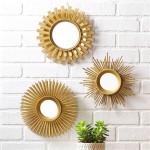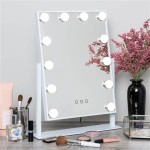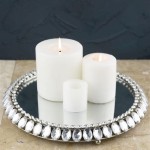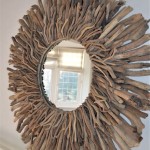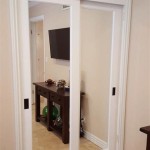What Size Mirror Should I Use Over a 48 Inch Vanity?
Selecting the appropriate mirror size for a 48-inch vanity is a crucial design decision that affects both the aesthetic appeal and the functionality of the bathroom. A well-proportioned mirror enhances the visual balance of the space, maximizes light reflection, and provides adequate viewing area for daily grooming tasks. Conversely, a poorly sized mirror can make the bathroom appear awkward, cramped, or simply aesthetically displeasing. Various factors influence the ideal mirror size, including the overall bathroom dimensions, desired style, and specific functional needs. This article will explore these factors and provide guidance for selecting the optimal mirror size for a 48-inch vanity.
The term "48-inch vanity" refers to the width of the vanity cabinet. This measurement typically dictates the maximum width of the mirror that can be comfortably placed above it. However, adhering strictly to this maximum is not always the best approach. Balancing width with height and considering the overall composition of the wall space are equally important. The height of the ceiling, the presence of light fixtures above the mirror, and the style of the vanity itself all play a role in determining the ideal mirror dimensions.
Matching Mirror Width to Vanity Width
A common rule of thumb is to select a mirror that is approximately the same width as the vanity. This approach creates a visually harmonious and balanced look. For a 48-inch vanity, a 48-inch wide mirror would be a straightforward and generally safe choice. However, there are instances where deviating slightly from this rule can be beneficial. If the vanity is flanked by walls or other fixtures, a slightly smaller mirror might be preferable to avoid an overly crowded appearance.
Conversely, in a larger bathroom with ample wall space, a mirror slightly wider than the vanity can create a more dramatic and impactful statement. In this case, the designer must carefully consider the surrounding elements to ensure the mirror does not overpower the space. An important aspect to consider is the available space on either side of the vanity. If the vanity is positioned between two walls, a mirror that closely matches the vanity's width is often the best option, preventing an awkward or cramped appearance.
When choosing a mirror width, it is important to consider the frame. A mirror with a thick, elaborate frame will effectively increase the overall width of the mirror, so the actual reflective surface may be narrower than the stated dimension. Conversely, a frameless mirror will provide the maximum reflective area for the given width. This is especially important in smaller bathrooms where maximizing light and the feeling of spaciousness is a priority.
For vanities with double sinks, a single large mirror spanning the entire width is often preferred, providing a cohesive and unified look. Alternatively, two smaller mirrors, one above each sink, can be used for a more traditional or personalized style. In this case, each mirror should be at least half the width of the vanity, but careful consideration must be given to the space between the sinks and the overall visual balance.
Determining Optimal Mirror Height
While the width of the mirror is often dictated by the vanity's dimensions, the height is more flexible and depends on factors such as ceiling height, personal preference, and the presence of overhead lighting. A common guideline is to choose a mirror height that is two-thirds to three-quarters of the vanity's width. For a 48-inch vanity, this would translate to a mirror height of approximately 32 to 36 inches. However, this is just a starting point, and the ideal height may vary depending on the specific bathroom layout and design.
In bathrooms with standard 8-foot ceilings, a taller mirror can visually elongate the space, making it feel more open and airy. Conversely, in bathrooms with lower ceilings, a shorter mirror may be preferable to avoid a top-heavy or unbalanced appearance. When selecting the mirror height, it's important to consider the eye level of the primary users of the bathroom. The center of the mirror should ideally be at or slightly above eye level to provide a comfortable and functional viewing angle.
The presence of light fixtures above the mirror also impacts the ideal mirror height. If sconces are mounted on either side of the mirror, the height should be sufficient to accommodate them without overcrowding the wall space. If a light fixture is mounted directly above the mirror, the height of the mirror should be chosen to create a balanced and visually appealing composition. The distance between the top of the vanity and the bottom of the light fixture should be carefully considered.
Consider the style of the mirror itself when determining the height. A rectangular mirror, either horizontal or vertical, is a versatile choice that works well in most bathrooms. An oval or round mirror can add a softer, more elegant touch, but the height should be carefully proportioned to avoid looking out of place. Consider also the function. A taller mirror can be beneficial for seeing more of one's reflection, especially useful for activities like styling hair. A shorter mirror, on the other hand, may be sufficient for basic grooming tasks.
Considering Overall Style and Bathroom Design
The style of the mirror should complement the overall design of the bathroom. A modern bathroom with clean lines and minimalist aesthetics would benefit from a frameless rectangular mirror or a mirror with a simple, understated frame. A more traditional bathroom might call for a mirror with an ornate frame or a beveled edge. The finish of the frame should also coordinate with the other fixtures in the bathroom, such as the faucets, towel bars, and light fixtures.
The mirror's shape can also significantly impact the overall aesthetic. A rectangular mirror is a classic and versatile choice that works well in most bathrooms. A round or oval mirror can add a touch of softness and elegance, while a square mirror can create a more modern and geometric look. The shape should be carefully considered to complement the style of the vanity and the overall bathroom design. An arched mirror can also offer a unique design element but might necessitate precise measurement to avoid interfering with overhead lighting or other fixtures.
From a practical standpoint, the mirror should be easy to clean and maintain. Frameless mirrors are often easier to clean as they lack the crevices and details that can accumulate dust and grime. Mirrors with sealed edges are also less prone to moisture damage, which is especially important in a bathroom environment. The material of the frame, if present, should also be durable and water-resistant.
Finally, consider the placement of the mirror relative to other elements in the bathroom. The mirror should be positioned to maximize light reflection and create a sense of spaciousness. If the bathroom has a window, positioning the mirror to reflect natural light can significantly brighten the space. The mirror should also be placed in a way that minimizes glare and distortion. Experimentation and careful consideration of these factors will lead to the selection of the most appropriate mirror size and style for a 48-inch vanity, enhancing both the functionality and the overall aesthetic of the bathroom.

How To Pick The Right Size Mirror Antique Glass Ltd

Bathroom Mirror Size Calculator

What Size Mirror For 48 Inch Vanity

What Size Mirror For 48 Inch Vanity Perfect Fit Guide Led World

What Size Mirror For 48 Inch Vanity

What Size Mirror Should I Get For A 48 Inch Vanity Construction Commodities Supply Inc

Niveal 48 In W X 36 H Rectangular Framed Wall Bathroom Vanity Mirror Sm 4836mb The Home Depot

Standard Bathroom Mirror Sizes With 2 Drawings Homenish

What Size Mirror For 48 Inch Vanity

Linea 48 W X 36 H Led Heated Bathroom Mirror Anti Fog Dimmable Front Exbriteusa
